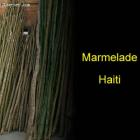ADVERTISEMENT
Haitian Artist - Haiti Observer Blog
Haitian Artist, Haiti Observer Blog. Read the following articles about Haitian Artist
Galerie Marassa in Petion-Ville
Galerie Marassa, established in 1977, is a leading galleria of the Caribbean. It is located in Petion-Ville, Haiti and has acquired global recognition since its birth. Galerie Marassa has created a home for nurturing new Haitian art talents.
In its history the galleria has organized hundreds of national and international exhibitions as well as art fairs and biennales.
Michele Gardere Frisch is the name behind Galeria Marassa.
Michelle opened the facility after completing her artistic studies at The New England School of Art and the school of decorated arts in Madrid. From the two institutions, Michelle had acquired a degree in Art and Design of the environment.
Galerie d'Art Nader in Petion-Ville
After excelling in the art business Georges S. Nader decided to open an art gallery in 1966. Nader was selling art in a famous department store in the Haitian capital Port-au-prince.
When he began to appreciate the value of art there were very few galleries then. Nader's aim was to expose the wealth in Haitian art. With the assistance of media the public soon became aware of the value of Haitian art. The art developed and earned worldwide fame through press exposition, publications and planned exhibitions. Nader gained a large clientele within and without Haiti.
Dewitt Peters and the Centre D'Art Haitien
It was during the World War II when DeWitt Clinton Peters arrived in Haiti as a high school English teacher. He chose teaching to substitute service in the military. Peters had a natural passion for art and especially painting but was surprised to find that there were no art galleries in Haiti. Peters picked a dream to preach art in Haiti. He committed himself to convince Haitians that art was a noble profession. He told the people of Haiti that they could make a better living through embracing art.
Recycled Metal Art in Haiti
A unique type of art in Haiti is the Haitian metal art. This form of art involves the re-use of used oil drums for art work.
Steel oil drums once have been emptied are bought from the port near Port Au Prince and taken to the town of Croix-des-Bouquets which neighbors the Haitian capital. Here the process of recycling the used drums begins.
First the round ends of the used drum are removed and the drum is set on fire to remove paint and any form of residue. The cylindrical drum is then cut top down and flattened. The flat metal canvas measures about 3 x 6 inches. A chalk is used to make a drawing of the shape to be worked on the metal surface. The art is completed with primitive tools like chisels and hammers. The primitive piece of art is then signed by the artist and then covered with a protective coat.
Saint Soleil Art
Saint Soleil is an art school linked to Prospere Pierre-Louis. Prospere has his roots in Bainet a town in the south of Haiti. After his birth in 1947 he grew to love drums and the violin. His father houngan also engaged him in voudou ritual ceremonies.
Despite his lack of school education, the boy practiced shaving and worked as barber at the age of 16. His painting destiny was shaped when he hooked up with Maud Robard.
In 1973 and while Prospere was working for Maud as a waiter, Maud organized a team of artists of different genres into a movement. Maud was working in collaboration with a Haitian legend artist Tiga. The movement was called Saint Soleil. Prospere joined the team under the influence of Maude.
Voodoo Flag, a unique Haitian art
Voodoo flags are a significant form of art that define the Haitian art industry. Haitian flags depict a combination of several African beliefs and cultures. Voodoo flags have the history of the enslavement of Africans in Haiti. The art also brings on board the influence of Catholicism and Jamaican and Cuban cultures.
The Caribbean country had colonizers French and Spain take over in 1600s. The two colonies improved economic activities in the region. Demand for slave workers increased and more slaves were brought in from Africa.
The slave numbers increased until they outnumbered the colonizers. The slaves staged the only organized and successful slave revolt which led to independence.
Primitive art of Haiti with an international reputation
Haitian art has grown to attain world recognition. This is an extra-ordinary fame for the so called the poorest of all the western countries.
Haitian art is termed as the best form of primitive art in the world. The industry gained ground in 1940 when an American teacher began to appreciate the uniqueness of Haitian art. Dewitt Peters was impressed by the talents that he discovered in many uneducated Haitians.
The people of Haiti create unique artistic materials which are based on raw colors. Dewitt established the Centre D'Art Haitian in 1943 an artistic centre to support and expose Haitian dedicated artists.
Cap-Haitien Art
This is a form of art which dominates Cap-Haitien in the northern seacoast of Haiti. The pioneer of the type of art is Philome Obin a Haitian art legend.
Cap-Haitien form of art is characterized by linear elements and the artistic use of paints and brushtokes.
The unique art is based on the subject of the Haitian way of life, the people, the Haitian culture and the country's heritage.
The artworks of Haiti are globally recognized. The revolution began in 1944 after the established of Centre D' art Haitian in Port au Prince by the legend Dewitt peters an American teacher. The industry has since developed beyond imagination to become the best in primitive art in the world.
Artibonite Style of Art
Haiti has developed to become the home of primitive art. The art history dates back to 1940's when the Centre D'art was established by Dewitt peters in Port-Au-Prince.
The art revolution has seen the establishment of other several schools of art in Haiti. School of Cap-Haitian was founded by Philome Obin, Prefete Duffaut created the School of Jacmel, Foyer Des Arts Plastiques was established by Lucien Price and Cedor.
Another school of art is the Artibonite School linked to Saincilus Ismael who is the founder and considered as the father of a style of painting called Artibonite. Saincilus Ismael has contributed much to the evolution of art in Haiti.
Jocelyne Labylle Biography
Born on January 7, 1973, in Saint Claude on the West Indian Island of Guadeloupe, Jocelyn Labylle was attracted to the world of show business at an early age. Her dream of sequins and gloss was largely fostered by her mother's success as a dancer in Karabina, the most famous folklore dance group in Guadeloupe. In 1992 Labylle joined the group Elodie; in 1994 she joined Zouk Orchestra. She appeared on the covers of all their albums. In 2000, Jocelyn Labylle returned to this studio to record her second album. She released the single "J'ai depose les clefs," which means I left my keys. The single was followed by the album Ma Petite Lumiere (My little light). The album features "Parle-moid'elle" and was written by Harry Diboula.
Our objective is to share with you news and information about Haiti and the people of Haiti. Traditions, habits and the way we were or grew are alive in this site. We highly recommend that you Subscribe to our Newsletter and also share with us some of the things that are memorable and made us unique people.

 Life After Death
Life After Death  Haitian Thanksgiving
Haitian Thanksgiving  Haitians are a Proud People
Haitians are a Proud People  Haiti tech Summit
Haiti tech Summit  Marmelade, Haiti
Marmelade, Haiti